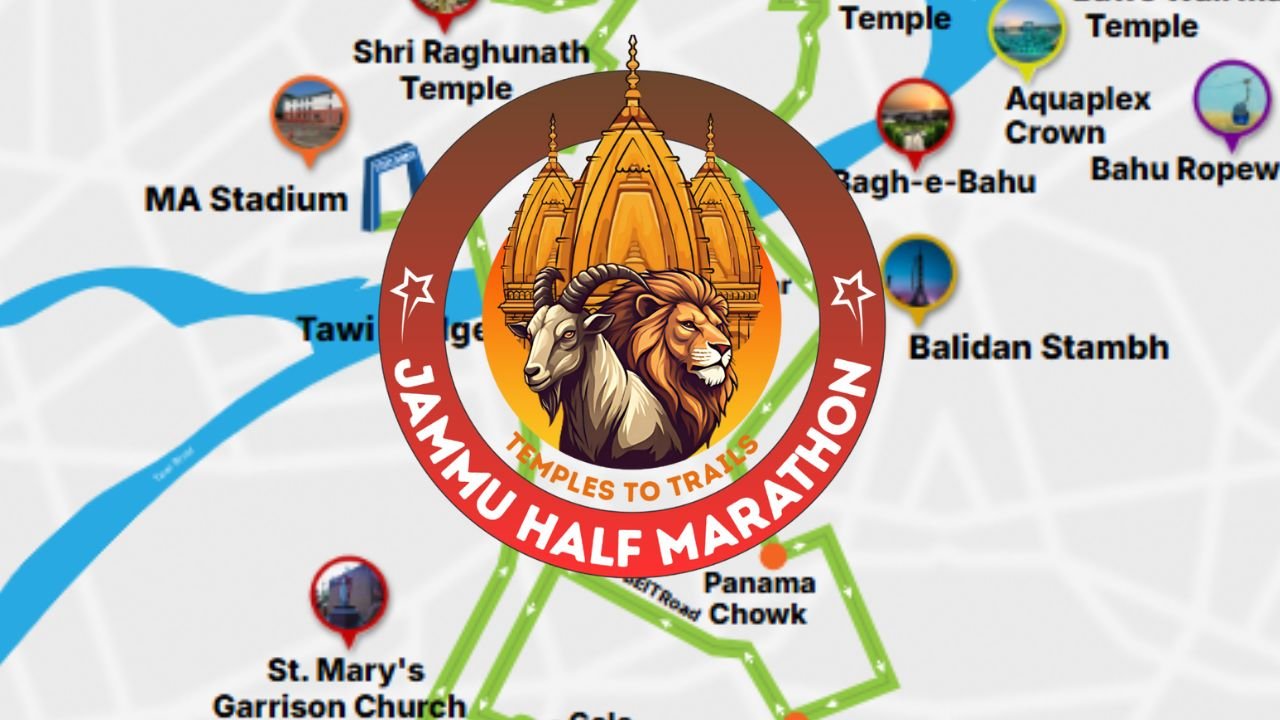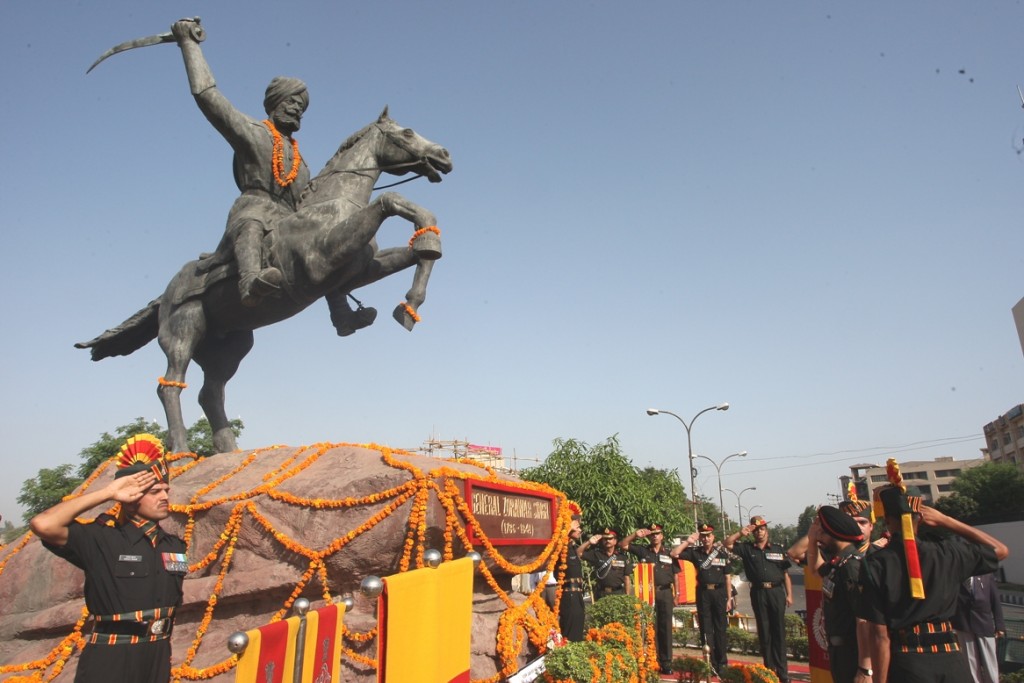Baba Buddha Amarnath shrine is one of the oldest shrines of Jammu region. The splendid and holy temple of Baba Buddha Amarnath is located in the village of Rajpura in tehsil Mandi of Poonch district, Jammu & Kashmir.
Budha Amarnath Ji mandir situated in between the main belt of Pir Panchal Range at Rajpura Mandi which is 25 kms on the North East of Poonch city.
Exploring the Sacred Baba Budha Amarnath in Poonch
This temple is also known as “Chattani Baba Amarnath temple” which stands erect at 290 km in the North-West directionof Poonch. This temple place is blessed with picturesque surroundings, located at 4600 ft. above sea level. The River Pulsata flows by the temple, is considered to be sacred where pilgrims take bath before entering to the temple.
This is a unique Shiva Temple which is located on the foot hill and not on the hill top and secondly the Shivling of white stone is not self-made.
The original mandir has been constructed out of with one big stone. There are four doors in the Mandir on the northern, southern, eastern and western sides which indicates that the doors of this shrine are open for all the four varnas. There is a natural Shivlinga of white stone (chakmak) inside the mandir. Number of ancient idols collected there from nearby villages are also installed in the premises of the mandir where were four holy springs near the mandir in the past.At present the water of three springs has been diverted to fourth one which is on the southern side of the mandir. The water of these springs is considered holy from religious point of view. The pilgrims first take bath in this spring and then enter in the mandir for prayers.
It is a popular belief among the Hindu community that without visiting Baba Amarnath shrine, their Amarnath Yatra cannot be completed. Hindu community living around the temple is loyal and have undying faith towards the temple. They have immense faith in the temple and contribute to maintenance of the famous shrine of Baba Amarnath.
Historical Significance Baba Amarnath in Poonch
A mythological legend is associated with the river and it has been named after Rishi Pulsata, grandfather of Ravana, it is said that Pulasta Rishi performed his tapasya and thus is known as Pulsata stream.
Like all ancient temples and shrines, Baba Amarnath temple is also enveloped in legends and myths. A famous legend in Hindu mythology held that Lord Shiva enlightened Goddess Parvati about the secret of life and eternity in this holy temple. The other formations of ice found and worshiped in the temple are replica of Shivaand Parvati’s son, Ganesha. People who come to visit this temple for completing the Yatra actually come here to worship a Lingam made of ice stalagmite. Another legend related to this temple held that King Aryaraja in Kashmir worshipped a Lingam made of ice.
In the book Rajatarangini, it is mentioned that queen Suryamathi had gifted sacred emblems like banalingas and trishuls to this temple. There are many manuscripts and ancient texts found in the temple, which gives references of similar incidents. Another legend which is popular among people of the region is that it was in Panjtarni when five elements namely – sky, fire, air, water and earth was left by Lord Shiva. It was here that Lord Shiva performed Tandava dance, which was a symbol of sacrificing the earthly pleasures. After that along with Goddess Parvati, LordShiva entered the holy temple of Baba Amarnath. Amarnath region boasts about the legends and myth of Lord Shiva and Parvati.
Also the legends go as Chandrika Rani of Loran who was a true devotee of Lord Shiva would unfailingly go for her annual pilgrimage to Amaranth beyond Srinagar. One year when she could not undertake the pilgrimage on account of feudal wars in the region, she grew desponded and sad. She was so dejected that she gave up food and water and kept praying to the Lord. Then, Lord Shiva appeared before the Rani in the form of an old Sadhu and told her that Mahadeva has accepted her devotion and shifter below the Loran Mountain on the banks of a stream. The Rani collected a large gathering and set out in search of Amaranth ji. The Sadhu led the devotees to a projection of the Chakmak Rock in the form of a Shiva Linga. The shrine was constructed by the grateful Rani and other devotees at that spot and came to be called Budha Amaranth after the Sadhu.
Read also: KNOW THE HISTORY OF THE OLDEST TEMPLE – BAWE VALI MATA
Chhari Mubarak to Baba Buddha Amarnath in Poonch
Every year a ten-day Yatra to the shrine is organized in the most splendid and grand manner that ends on the event of Purnmashi, which is the day of RakshaBandhan. The chhari yatra for the first time was started by Raja Moti Singh of Poonch. During the Yatra days entire region drools in a festive mood while joyously celebrating the festival.
A significant highlight of the festival is the Chhari Mubarak Yatra, where the holy mace is carried in a grand procession from Dashnami Akhara to Swami Budha Amarnath Ji Mandir in Mandi. This journey, spanning a distance from Poonch to Mandi, is undertaken on foot, with thousands of devotees accompanying the Mahant Ji, who is seated in a traditional palki (palanquin). The procession makes its first major halt at Chandak, where devotees are greeted by local communities, including the region’s Muslim population.
This aspect of the festival is notable for its inclusivity, as people from various faiths join in the celebration. Along the route, stalls offering refreshments and free langar (community meals) are set up, with contributions from local Muslims, emphasizing the communal harmony that the festival promotes. The Chhari Mubarak procession symbolizes not just a religious journey but a spiritual union of different communities.
Read also:
Reception at Swami Budha Amarnath Ji Mandir
Upon reaching Rajpura, the procession is warmly welcomed by local authorities, residents, and trust members who manage the temple. The Border Security Force (BSF) contingents also pay their respects by offering a guard of honor at the temple gate. The arrival of Chhari Mubarak at the temple marks the culmination of the yatra, followed by a grand Aarti (ritual of worship) of Lord Shiva. The entire event is steeped in traditional rituals that have been followed for centuries, making it a vibrant and deeply spiritual occasion for all attendees.
A Blend of Spirituality and Scenic Beauty
Budha Amarnath Mandir is not just a place of worship but also a serene getaway for those seeking peace amidst nature. The temple’s surroundings—lush green pastures, towering mountains, and flowing streams—offer a perfect setting for meditation and spiritual reflection. The location provides a serene backdrop for the devotees who come to seek Lord Shiva’s blessings, away from the bustle of everyday life.
Whether it’s the rich history, the architectural beauty, or the deep-rooted traditions, the temple holds immense cultural and spiritual significance. The annual Mela Budha Amarnath Festival brings the community together, fostering a sense of unity, devotion, and peace. For those visiting the Pir Panjal region, a trip to this sacred temple offers an unforgettable spiritual experience that blends devotion with nature’s tranquility.
Budha Amarnath in Poonch is a treasure trove of spiritual heritage in Jammu & Kashmir. Its unique architecture, rich traditions, and the grand festival of Mela Budha Amarnath Ji attract pilgrims from across the country. Whether you are seeking spiritual fulfillment or a scenic retreat, this temple provides an unforgettable experience that celebrates the essence of Indian culture, religious harmony, and divine grace.















